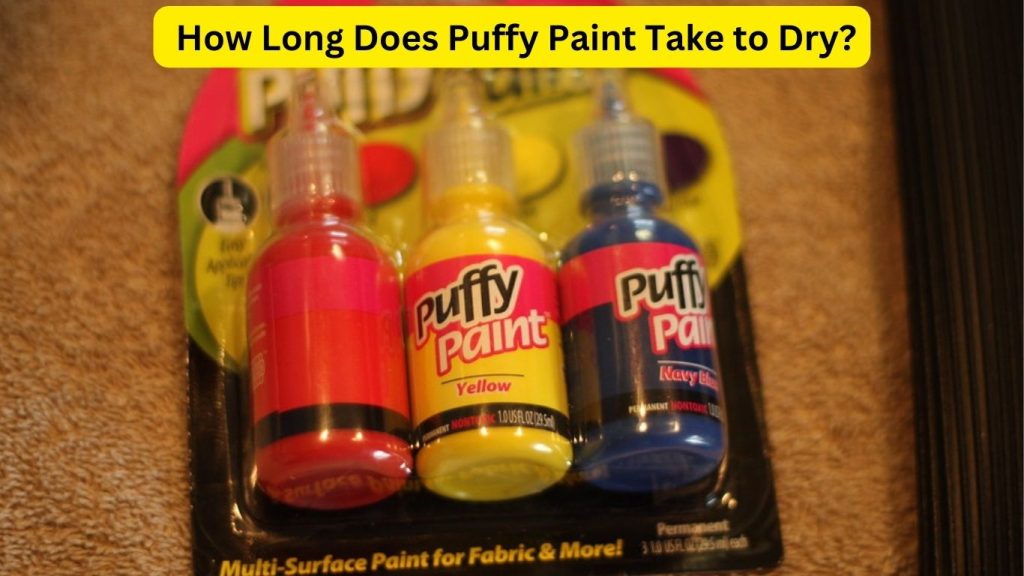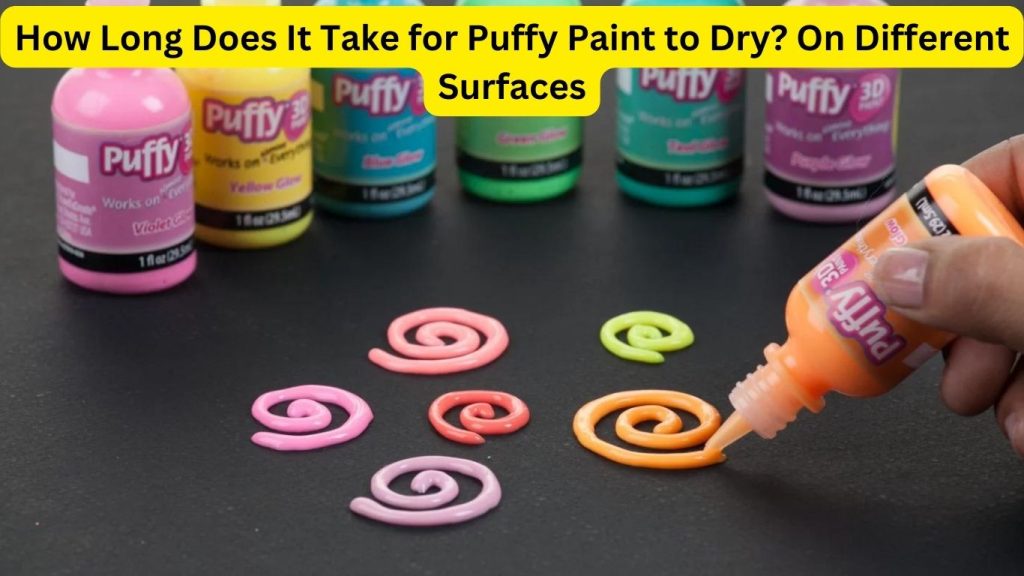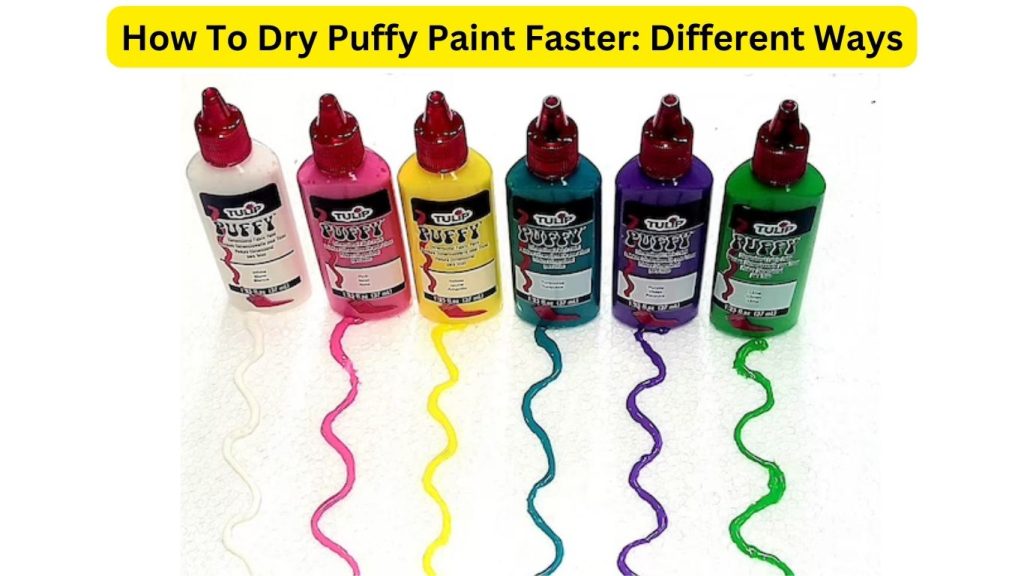Puffy paint is a fun and versatile medium that adds texture and dimension to any art project. Whether you’re creating colorful designs on fabric, paper, or other surfaces, knowing how long it takes for puffy paint to dry is crucial for achieving the desired results. Unlike traditional paint, puffy paint requires a bit more patience.

It typically takes anywhere from 24 to 72 hours for puffy paint to fully dry and set, depending on various factors such as humidity, the thickness of the application, and the specific brand you’re using.
In this article, we’ll explore the factors that influence drying time and provide helpful tips to ensure your puffy paint creations dry perfectly every time.
Contents
What is Puffy Paint?
Puffy paint, also known as dimensional fabric paint, is a type of paint that creates a raised, three-dimensional effect when it dries. It is commonly used to add texture and dimension to various surfaces, especially fabric. Puffy paint typically comes in squeezable bottles with a fine nozzle, allowing for precise application.
The paint contains ingredients that cause it to expand and puff up as it dries, resulting in a raised and textured finish. Puffy paint is available in a wide range of colors and finishes, including matte, metallic, and glitter.
It is popular for creating artwork, personalized designs on clothing, fabric crafts, and other creative projects.
How Long Does It Take for Puffy Paint to Dry? On Different Surfaces

The drying time for puffy paint can vary depending on the surface it is applied to. Here are some general guidelines for drying times on different surfaces:
- Fabric: Puffy paint applied on fabric typically takes around 4 to 24 hours to dry completely. It is essential to allow adequate drying time before handling or washing the fabric.
- Paper: Puffy paint on paper tends to dry relatively quickly, usually within 1 to 2 hours. However, thicker applications or high humidity levels can extend the drying time.
- Wood: Drying time for puffy paint on wood can range from 4 to 24 hours. It is advisable to let it dry undisturbed for the recommended duration to ensure proper adherence and prevent smudging.
- Glass: Puffy paint on glass can take longer to dry, often requiring 24 to 48 hours or more. The smooth surface and lack of absorption can prolong the drying process.
Remember that these are general estimates, and actual drying times may vary depending on factors such as the thickness of the paint, humidity levels, and environmental conditions. Always refer to the specific instructions provided by the manufacturer for the most accurate drying time recommendations.
Can You Dry Puffy Paint Faster?
Yes, you can dry puffy paint faster. By implementing certain techniques, such as increasing airflow or applying heat, you can expedite the drying process.
Increasing airflow can be achieved by using a fan or placing the painted item in a well-ventilated area. Applying heat, either with a hairdryer or by placing the item in a warm oven (at a low temperature), can also speed up drying.
However, it’s essential to follow the manufacturer’s instructions and exercise caution when using heat sources. Additionally, thinner layers of puffy paint tend to dry faster than thicker ones.
Remember to test these methods on a small, inconspicuous area before applying them to the entire project.
How To Dry Puffy Paint Faster: Different Ways

Here are step-by-step instructions on different ways to dry puffy paint faster:
1. Increase Airflow:
- Find a well-ventilated area, preferably with a fan or open window.
- Place the painted item near the fan or in front of the open window.
- The increased airflow helps evaporate the moisture in the paint, speeding up the drying process.
2. Use a Hairdryer:
- Set your hairdryer to a low or medium heat setting.
- Hold the hairdryer about 6-8 inches away from the painted surface.
- Move the hairdryer continuously across the paint in a sweeping motion.
- Avoid overheating by keeping the hairdryer at a safe distance and avoiding direct contact with the paint.
3. Apply Heat:
- Preheat your oven to a low temperature, typically around 150-200 degrees Fahrenheit (65-93 degrees Celsius).
- Place the painted item on a baking sheet or aluminum foil.
- Put the baking sheet with the painted item in the oven.
- Keep a close eye on it and periodically check the progress to avoid overheating or burning the paint.
- Remove the item from the oven once it’s dry.
Remember to consult the instructions provided by the puffy paint manufacturer as different brands may have specific recommendations for drying. It’s essential to take precautions when using heat sources and avoid exposing the paint to excessive heat or direct contact with flames.
Does Puffy Paint Dry Hard?
No, puffy paint does not dry hard. Unlike regular acrylic or fabric paint, puffy paint retains a soft and raised texture even after drying. It maintains its three-dimensional appearance, creating a raised surface on the painted area. The unique characteristic of puffy paint is its formulation, which includes ingredients that expand and create a textured effect when exposed to air.
As the paint dries, it forms a flexible and pliable surface that retains its softness and puffiness. This quality makes puffy paint ideal for creating textured designs on various surfaces, including fabric, paper, and other craft projects where a raised and tactile finish is desired.
Read Next:
Final Words
The drying time for puffy paint can vary depending on several factors. Generally, it takes puffy paint approximately 4 to 24 hours to dry completely.
However, factors such as the thickness of the paint, humidity levels, and the surface on which it is applied can affect the drying time. Thicker applications of puffy paint may require more time to dry thoroughly.
Additionally, higher humidity levels can prolong the drying process. It is recommended to allow sufficient time for the paint to dry before handling or applying any pressure.
To ensure optimal results, it is advisable to refer to the specific instructions provided by the manufacturer of the puffy paint you are using.
